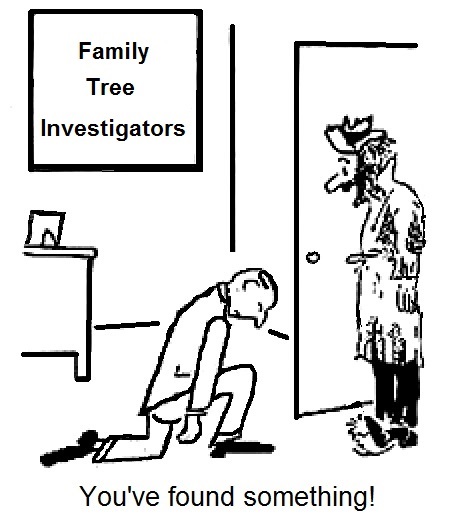|
The
|
||||||||||||||||||||||||||||||||||||||||||||||||||||||||||||||||||||||||||||||||||||||||||||||||
THE BURGENLAND BUNCH NEWS - No. 309 May 31, 2020, © 2020 by The Burgenland Bunch All rights reserved. Permission to copy excerpts granted if credit is provided. Editor: Thomas Steichen (email: tj.steichen@comcast.net) BB Home Page: the-burgenland-bunch.org BB Newsletter Archives: BB Newsletter BB Facebook Page: TheBurgenlandBunchOFFICIAL Our 24th year. The Burgenland Bunch Newsletter is issued monthly online. The BB was founded in 1997 by Gerald Berghold, who died in August 2008. |
||||||||||||||||||||||||||||||||||||||||||||||||||||||||||||||||||||||||||||||||||||||||||||||||
| Current Status Of The BB: * Members: 2951 * Surname Entries: 8990 * Query Board Entries: 5798 * Staff Members: 13 |
||||||||||||||||||||||||||||||||||||||||||||||||||||||||||||||||||||||||||||||||||||||||||||||||
This newsletter concerns: 1) THE PRESIDENT'S CORNER 2) USING THE BURGENLÄNDERS HONORED AND REMEMBERED MEMORIAL LIST TO RESTORE LOST CONNECTIONS TO BURGENLAND (by Richard Potetz) 3) HISTORICAL BB NEWSLETTER ARTICLES: - WORLD WAR I ETHNIC CLEANSING 4) ETHNIC EVENTS 5) BURGENLAND EMIGRANT OBITUARIES (courtesy of Bob Strauch) |
||||||||||||||||||||||||||||||||||||||||||||||||||||||||||||||||||||||||||||||||||||||||||||||||
1) THE PRESIDENT'S CORNER (by Tom Steichen)  Well,
we are not virus free yet, despite economies opening back up, so please stay safe! Well,
we are not virus free yet, despite economies opening back up, so please stay safe!As for this month's collection of bits and pieces (Article 1), I begin with a repeat of Frank Paukowits' message concerning BH&R, as it ties in with the message of Article 2 (more on that below). The next two bits report that BB members Ed Marx and Tom Steichen (yep, me) have made available a "transcription of Güssing Catholic birth records for 1861-1895" ...somehow, I got sucked deep into this transcription, so I'll take more than just my usual editorial "credit" in making it available. The first bit tells you about the transcription; the second about some other things learned while doing it. You may ask why did we create another transcription when FamilySearch already provides a partial transcription via its searchable index? The answer is that some of the index text is wrong (and often horribly wrong) for over 71% of the Güssing birth entries, making it almost unusable. We next inform you that The Austrian Jewish Museum has announced transcriptions of Jewish birth, marriage and death records for Eisenstadt. We follow that bit with one that is corona-related... an update of last month's status report on the "corona virus epidemic in Austria" (contrasted by two US states). We close with our regular tidbit features, the monthly BB Facebook report, book sales, a recipe and a humor item. Article 2 is by Richard Potetz. In it, he tells about using the Burgenländers Honored and Remembered (BH&R) memorial list to Restore Lost Connections to Burgenland. Richard notes that names, both given and family names, have a way of changing over time. What is listed on a DNA match list or a Find-A-Grave entry may have little resemblance to the original name back in the Burgenland birth records. The village name, too, may be missing or suffer similar fate, changed by phonetic spellings, unreadable manifest notations, and time. Richard sees BH&R as an opportunity to tie these modified names back to Burgenland and the proper village name. The remaining articles are our standard sections: Historical Newsletter Articles, (no) Ethnic Events and Emigrant Obituaries.  Reaching
a BH&R Milestone (Frank Paukowits): Thanks so much to all our regular and Facebook BB members for contributing the
names of deceased Burgenländers to the BH&R website. As we indicated last month, we would like to achieve a milestone of
25,000 names in our database by early 2021, the 100th anniversary of Burgenland becoming part of Austria. If you missed the
chance to contribute names earlier, you still have time to do it now. Send the info to:
BHandRProject@gmail.com. Two fields of information that are particularly
important are the year of death and the name of the cemetery. If you have this information, we would
appreciate it if you would make sure to provide it as part of your submission. Reaching
a BH&R Milestone (Frank Paukowits): Thanks so much to all our regular and Facebook BB members for contributing the
names of deceased Burgenländers to the BH&R website. As we indicated last month, we would like to achieve a milestone of
25,000 names in our database by early 2021, the 100th anniversary of Burgenland becoming part of Austria. If you missed the
chance to contribute names earlier, you still have time to do it now. Send the info to:
BHandRProject@gmail.com. Two fields of information that are particularly
important are the year of death and the name of the cemetery. If you have this information, we would
appreciate it if you would make sure to provide it as part of your submission.A full listing on BH&R includes the name of a deceased emigrant from Burgenland who settled in the USA or Canada, along with the years of birth and death, the town of origin, the place where the emigrant is buried (cemetery name and location), and the maiden names of women if married and a Burgenländerin. If you don't have all the information, send along what you have and we will try to fill in the rest. Also, if you have any questions, please send them to the above email address. Güssing RC Baptisms Transcription: In last month's newsletter, I noted that BB Member Ed Marx had provided a transcription of the birth/baptism records for the Catholic parish of Strem for the 1877-1895 era. This month, Ed and I, jointly, are making available a transcription of birth/baptism records for the Catholic parish of Güssing (Németujvár). It is based on the online image collection located here: familysearch.org/...cat=105175, which contains images from the baptism book for Németujvár, Vas, Hungary for the 1861-1895 era. Güssing (Németujvár, N Ujvár) was also the official recording location during this time for villages Glasing ([Kis-]Kolozsvár), Langzeil (none), Neustift bei Güssing (Gödörfő, Ujtelep), Rosenberg (Rosáhegy, Rozsáhegy), Urbersdorf (Orbánfalu, Orbánfalva, Úrbér) and, after 1874, Tobaj (Tobaj). Initially, this transcription was intended to be a lightly "cleaned up" capture of the FamilySearch.org text that appears below the images in the FamilySearch image viewer. Providing that (slightly modified) data in a single, sortable document in the BB style offers advantages, so was worth offering again. Generally, I avoid speaking negatively about any transcription, as even a small parish is a large undertaking and there is much value in having even an imprecise transcription. However, exploration of the captured Güssing text revealed that this was, by far, the least accurate transcription of Burgenland church records that I have ever seen (and I've been working these records for 20+ years!). Now I know why I've struggled to find people in those indexed records. Güssing is a large parish... 4,310 birth/baptisms records for this 35-year period (actually, under 34 years, because there were no images for 1890 and a few pages were missing in other years, so somewhat over 125 records/year). [In comparison, the Strem transcription mentioned above had only 689 records over 19 years, or about 36 records/year.] To give you an idea of how bad the transcription was, 71% of the rows (entries) had at least one error and, because many entries had more than one error, the average number of errors per row over all 4,310 entries was 1.03. Most of these errors were in the surnames of the mothers and fathers, but some given names were wrong too. Yes, some of these errors were in the oft-confused similar pairs of hand-written letters like e/c, s/z or r/n, so can be considered minor ...but there also were an astounding number of totally mangled names—mangled so bad that you would have no chance of recognizing the correct name from what was transcribed. In some cases, it was apparent that the transcriber had lost their place and pulled a name from the record before or after the one they were transcribing. In other cases, a village name was entered instead of the surname. In still other cases, the Latin-language occupation for the father was appended onto his surname (usually with its own mangling). I also recognized a common problem arising from the often "stretched-out" writing style of these records... it was clear the transcriber was reading some names letter-by-letter, then forgetting which "set of bumps" represented a particular letter. Thus a correctly-transcribed 'm' might be followed by non-existent 'r' or 'n', as some of the "bumps" from the 'm' were reused. Or they'd get all the letters right in their mind then type them in the wrong order... I don't know how many Anna's were typed as "Anan"! Perhaps most frustrating was the apparent lack of memory for what were legitimate surnames... they'd finally get a surname right in one record then mangle it again in the very next record! Clearly, having experience in the nature of Burgenland names—its mingling of German, Hungarian and Croatian surnames flavored by the phonetic writing/spelling nuances of each group—would have been a big help; clearly this transcriber did not have such experience... but wouldn't you think they were learn as they went along? Apparently not. Now it is true that the original writer(s) of these imaged records were part of the problem... For example, it was quite common for capital letters F, J, and T to appear essentially identical in the images (so name Joannes could look like Foannes or Toannes). 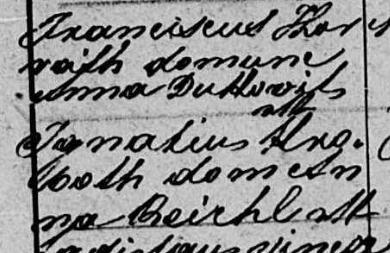 While
I do not think our transcriber got this one wrong, there were plenty of cases where a misinterpreted initial letter caused a
whole surname to be mangled (as well as a few given names). Capital letters H and K were frequently misinterpreted as each
other and even an M or N could be confused for these letters! Z and L were a pair easy to confuse too. While
I do not think our transcriber got this one wrong, there were plenty of cases where a misinterpreted initial letter caused a
whole surname to be mangled (as well as a few given names). Capital letters H and K were frequently misinterpreted as each
other and even an M or N could be confused for these letters! Z and L were a pair easy to confuse too.Then there was the problem of the old German "Kurrentschrift" letters sliding into this (mostly) Latin-font text. This caused the lowercase s, f, t and l characters to be frequently misinterpreted. And often, the final s or z in a surname became a squiggly line drifting downward... so we got a lot of false g and y characters transcribed. One last foible is worth mentioning: as you should know, the records that FamilySearch imaged and made available are copies of the original records. Thus some "scribe" (possibly the priest himself) sat down every year and copied the official church book into a new ledger that was sent to the state. This "scribe" had to interpret the writing of the priest and conscientiously make a copy... but it seems evident that the "scribe" (or even the original priest) made errors too. We know this because, once all the records are transcribed into digital format, we can sort by, say, husband's name, house number and date and then observe the wife's name. If there are 5 records with the same husband, house number and wife but then another record in the middle of the time sequence with a different given name or surname for the wife, we can reasonably assume this "odd" one is an error. We can recheck the image to confirm we transcribed the entry correctly and, if so, then the error must have been in the original writing or in the ledger copy process. It is simply unreasonable to believe otherwise. Likewise, we can sort by the wife's name, house number and date and then observe the husband's name, drawing similar conclusions about any inconsistencies. However, when the inconsistency is at the start or end of the time sequence, it is difficult to draw a firm conclusion, as deaths occurred, making multiple marriages common (one would need to consult the death and marriage records to sort these out). That same process of sorting and observing will also reveal small spelling variations and/or transcription errors, allowing these to be merged and/or corrected. I mention this because we chose to perform a two-stage transcription and provide two separate digital files, with the second file being developed largely via this "sort and observe" correction technique. The first file is what we call the "raw" transcription, being our best effort to transcribe exactly what was written. The exception to "raw" is that given names have been standardized, as many were abbreviated or were extremely obvious pairs (such as Josepha and Josefa). The second file is what we have called a "standard" transcription, converting all "obvious" variations of a family name to a single version. If you have worked in the Burgenland records at all, I'm sure you know that W and V are often exchanged, depending on the native language of the writer. Thus Weber and Veber are the same name, as are Waldhofer and Valdhofer. Likewise, a name like Zotter might be written Czotter or Szotter or Zsotter. There are literally dozens of these "swappable" letter sets... and, in the Burgenland records, they do not represent a different name, rather they merely represent the way the writer of the record recorded this particular phonetic sound. Further, the common Croatian-related name ending meaning "son of" might be written -its, -ics, -sits, -tits, -csits, -sich, -isch (and more!). Regardless, these ending variations also should not be interpreted as creating a different surname; they merely represent the way the writer of the record recorded this particular phonetic sound. Likewise, the doubling (or not) of certain letters was largely meaningless... so pairs Zotter and Zoter; Potzmann and Potzman; Straus and Strauss, etc. should each be interpreted as representing the same name. Nonetheless, all these (largely meaningless) variations make it difficult to identify the same person in the records. Thus our "standardized" transcription selects a single variation for a given family, allowing the user to easily sort together the family in the transcription. We are making no statement that this is the "right" name variation, rather it is a convenience version, usually the one that was used most frequently in the raw transcription. It should be noted that there remain given/surname combinations for which we felt it was likely that they represented a single person/family but the lack of sufficient constancy in house number or wife name caused us not to merge them. Likewise, it seems probable that there may be at least one merged "family" that we got wrong. Still, it is our belief that the standard version of the transcription is much more useful for searching... but we strongly recommend that you also consult the raw version to understand how big a leap we made for some families between raw and standard names. As an aside, I'll note that the choice between a "raw" transcription versus a "standardized" transcription is an ongoing debate in the transcription community. The "raw" approach makes good sense when the transcriber has no knowledge of what he/she is transcribing... many transcription "purists" argue this is only what should be done. However, the reality of genealogy is that the "raw" approach forces each user of the transcription to create their own "standardized" version of a subset of that data (or miss a lot of family members!). The other view is that, when you have a knowledgeable, experienced transcriber, it is foolish not to take advantage of that knowledge. The knowledgeable transcriber can often, at a glance, recognize a written name (then only need to sort out the particular spelling variation of it) or can immediately see that a transcribed name is wrong—that the name (usually) does not appear in that village or that the transcribed combination of letters follows none of the "rules" for spelling names in the region. He/she also recognizes all of the things mentioned above for creating a more useful "standardized" transcription. For Güssing, we offer both options... and leave the choice of dataset to you. A few comments: The lack of a father's name in the transcription indicates an illegitimate birth. Also, the names found in square brackets [] and the [stillborn] notation were absent from the images (blank) but were filled in during the transcription process, the first by looking at other related records (so they are not really part of the “raw” transcription) and the second by reading the Latin notes on those record images. You can access the online transcription(s) directly via this link: GüssingRecords or by following the links starting from our Vital Records Transcriptions link found on the BB homepage. Güssing Birth Transcription -- Things Discovered Along The Way: There are always surprises when doing a transcription... this note will describe a few found in the Güssing Roman Catholic parish's Birth/Baptism records for 1861-1895 (as provided via FamilySearch.org's microfilm 700700 / digital collection 004620347). The Güssing parish was the recording location during this period for villages Glasing, Güssing, Langzeil, Neustift bei Güssing, Rosenberg, Urbersdorf and, after 1874, Tobaj. Not surprisingly, the above German village names are generally not what appears in the records, as the Hungarian village names were "officially" required to be entered. • Glasing was officially known as Kiskolozsvár (however Kolozsvár is what is in these records [the Kis part may have been added later to distinguish it from another Kolozsvár]); • Güssing was Németujvár (but a combination of Németujvár and N Ujvár appear); • Langzeil didn't exist officially as a named village, as it was considered part of Güssing, but the Langzeil names appears in the records anyway; • Neustift bei Güssing was listed in our records as having official name Ujtelep... but its early entries in the church records are under name Neustift. Starting in 1883, there also appeared the name Gödörfő ...and some research proved that it was a newly-assigned official name for Neustift (it even appears on maps!). Use of it in the birth records quickly took over but lasted only about two years before fading away. [Side note: none of the BB's village-related pages made reference to this name; strangely though, there is a 2013 article about the village in the BB newsletter, that I wrote, and it mentions the name... but only as the village's name before it was repopulated by Germans in the 1500s... apparently it meant "main pit" ...I had no memory of this until I searched our pages for the name.] After a short return to Neustift, Ujtelep appears and becomes the primary notation for the village; • Rosenberg is officially Rosáhegy but spelling Rozsáhegy is what appears in the records; • Urbersdorf is officially Obánfalu (though Orbánfalva and Úrbér are also accepted Hungarian names). The most common name used in these records is Orbánfalva... but Urbersdorf occasionally sneaks in; • Tobaj is Tobaj and it is the single instance where the German and Hungarian village names in Burgenland are the same ...even the Croatian name matches! Guess what? Tobaj is used in these records. Then there are the Maierhofs (Mayerhofs) that appear in the Güssing hotter. These were working farms in the outlying areas that were owned by the Batthyány nobility (Philip and Christopher); they were also residences for a fair number of families through the years. The two main ones were Ludwigshof and Zsánkoháza. Ludwigshof was in the far northern end of the Güssing hotter, whereas Zsánkoháza was in the southeast corner. 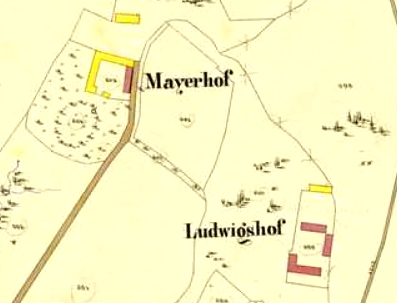 Both
consisted of multiple facilities, with parts separated from each other by short distances, and with multiple conscription
numbers; house numbers 151-153, 155-156, 175, were associated with Ludwigshof, and 158 apparently assigned to
a facility named Cecinowic (on maps) and 163 to a facility named Abdeckerey that also appear to be associated
with Ludwigshof; but these two facility names do not appear in the church records. To confuse things a little more, it
appears the Hungarians attempted to force a "more-Hungarian" name onto Ludwigshof in the 1880s, so name Lajosmajor
appears in the records starting in 1883 for some of these house numbers. Then Lipótmajor appeared and shared
some numbers! The first time I saw this second one, I assumed it was a typo (Lajos = Ludwig but Lipót =
Leopold); the priest also occasionally slid in a Latin version, Ludovi(cus), so I assumed he confused himself
with all the variations he was using. Not true; the name continued to appear. Further, all of these "Ludwigshof" house
numbers were also intermittently labeled as just Németujvár (perhaps more often than any Ludwigshof-specific
name). Both
consisted of multiple facilities, with parts separated from each other by short distances, and with multiple conscription
numbers; house numbers 151-153, 155-156, 175, were associated with Ludwigshof, and 158 apparently assigned to
a facility named Cecinowic (on maps) and 163 to a facility named Abdeckerey that also appear to be associated
with Ludwigshof; but these two facility names do not appear in the church records. To confuse things a little more, it
appears the Hungarians attempted to force a "more-Hungarian" name onto Ludwigshof in the 1880s, so name Lajosmajor
appears in the records starting in 1883 for some of these house numbers. Then Lipótmajor appeared and shared
some numbers! The first time I saw this second one, I assumed it was a typo (Lajos = Ludwig but Lipót =
Leopold); the priest also occasionally slid in a Latin version, Ludovi(cus), so I assumed he confused himself
with all the variations he was using. Not true; the name continued to appear. Further, all of these "Ludwigshof" house
numbers were also intermittently labeled as just Németujvár (perhaps more often than any Ludwigshof-specific
name).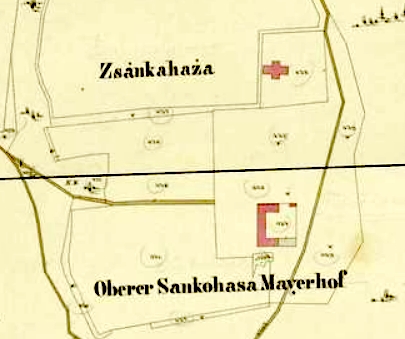 Zsánkoháza
had house numbers 150-155 associated with it. You may note that most of these house numbers overlap with Ludwigshof...
I can't explain that, but I doubt duplicate conscription numbers existed! Zsánkoháza also had subpart names showing on maps,
but these names do not appear in the church records. These were Poltelmayerhof, apparently associated with number
152, and Oberer Sankohaza Mayerhof and Unterer Sankohaza Mayerhof (I never figured out whether a specific
number was assigned to each of these named subparts). Like Ludwigshof, Zsánkoháza also picked up a new name in the 1880s:
Földmajor. It appears in 1883 and intermittently appears... you can currently find references to Feldmajor and
Feldmeierhof on modern maps in the area where Zsánkoháza was, so it appears a modification of that name survives to
today. The names that appear in the records are Zsánkoháza, Sankoház and Földmajor
...but their houses numbers were also intermittently labeled as Németujvár too. Zsánkoháza
had house numbers 150-155 associated with it. You may note that most of these house numbers overlap with Ludwigshof...
I can't explain that, but I doubt duplicate conscription numbers existed! Zsánkoháza also had subpart names showing on maps,
but these names do not appear in the church records. These were Poltelmayerhof, apparently associated with number
152, and Oberer Sankohaza Mayerhof and Unterer Sankohaza Mayerhof (I never figured out whether a specific
number was assigned to each of these named subparts). Like Ludwigshof, Zsánkoháza also picked up a new name in the 1880s:
Földmajor. It appears in 1883 and intermittently appears... you can currently find references to Feldmajor and
Feldmeierhof on modern maps in the area where Zsánkoháza was, so it appears a modification of that name survives to
today. The names that appear in the records are Zsánkoháza, Sankoház and Földmajor
...but their houses numbers were also intermittently labeled as Németujvár too.Finally, there was a Tómajor that appears in the records starting in the later 1880s; it was associated with house # 96 ...I was not able to discover where it was (as that conscription number has no modern street and orientation number, implying that it was destroyed and never rebuilt). As for the transcription, all Zsánkoháza references were standardized to Sankoház, as that was the early form in the church records. However, if the Németujvár or Földmajor names appeared with one of these house numbers, it was retained in the transcription. As for the 150-series conscription numbers and the crossover of names associated with them, my working theory (based on no facts!) is that they were assigned to the Batthyány nobles and neither the priest nor the people who worked on those properties had a firm idea of which conscription number applied to which facility, so the records reflect this confusion (I know I remain confused!). New Jewish Vital Records Transcriptions: The Austrian Jewish Museum (Österreichischen Jüdischen Museum, OJM, at www.ojm.at) has announced the availability of transcriptions of birth, marriage and death records from the Jewish Records at Eisenstadt (Kis-Marton) for the period 1895 to 1938. Birth records, by law, are limited to only those over 100 years old (currently 1919). The Museum plans to add legally-available birth records annually. These databases are available via the Museum's website; the BB provides links to their online digital indexes only, found via our Vital Records Transcriptions section on the home page. The online indexes can be searched, sorted and filtered, not only by name, but by all column headers. There currently are 403 births, 201 marriages and 434 deaths documented in the three databases. Credit goes to OJM director Johannes Reiss and his staff for producing the data and copyright remains with the Museum. Please note that the page instructions and column headers are presented in German but we provide translations of those instructions on our link page. In addition, we noted that the Museum has extended death records for Deutschkreutz (Sopronkeresztúr, Németkeresztúr) from 1895 to 1920.  Corona
Virus in Burgenland? Everything I hear says the battle is being won in Burgenland and in Austria as a whole. In the
US, much of the country is beginning to, or is talking about, reopening the economy. My own county in Pennsylvania moved to
"yellow" status on the 29th (a partial reopening). Below I continue to report on Austria, Pennsylvania and Minnesota. Corona
Virus in Burgenland? Everything I hear says the battle is being won in Burgenland and in Austria as a whole. In the
US, much of the country is beginning to, or is talking about, reopening the economy. My own county in Pennsylvania moved to
"yellow" status on the 29th (a partial reopening). Below I continue to report on Austria, Pennsylvania and Minnesota.
Austria was hit relatively early in the pandemic, so it made sense that they also were an early reporter of confirmed cases. Given the availability of their data, I started a chart to monitor the progress of the epidemic there. My chosen chart is a way to tell when the exponential growth of an epidemic is ending. When new cases are plotted against total cases on a log-log scaled graph, exponential growth appears as a straight line. When that growth stops being exponential, there appears to be a sharp drop from the growth line. Here is the latest chart for Austria (through May 27): 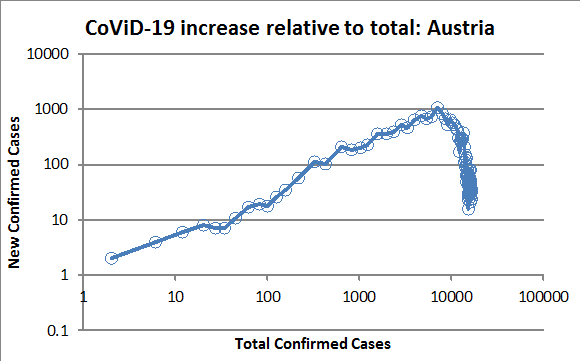 It is essentially unchanged compared to last month, with new confirmed-case counts throughout the month in the 20-40 per day range (being in that slightly thickening dark blob near the end of the charted data). Unless another wave hits, it remains safe to say that Austria is on course to recovery. I also previously noted that the US was big on "flattening the curve," which is somewhat different from "falling
off the line" in a graph like the one above. "Flattening the curve" is more targeted at stabilizing the current case
load at a manageable level (for hospital resource purposes). A "flattened curve," if presented like the above graph, would
have the right side of the plotted data become horizontal. That is not a bad thing, but falling of the line is
much better!
The Pennsylvania data actually seems to show some downward drift. Not only have we flattened the curve, we are
slightly winning the battle... but nothing like Austria shows. Minnesota continues to show exponential growth (and a lot of sporadic data!). As a whole, Minnesota began a partial reopening on May 15. Given the typical 2-week exposure-to-active-case lag for Covid-19, they should soon (but not yet) show the effects of their reopening. Like last month, these charts continue to indicate that the epidemic is "local" in nature, being in a particular stage at
differing times for different locales. Now we await the effect of the social distancing rules... a case resurgence? Tune in
next month! |
||||||||||||||||||||||||||||||||||||||||||||||||||||||||||||||||||||||||||||||||||||||||||||||||
2) USING THE BURGENLÄNDERS HONORED AND REMEMBERED MEMORIAL LIST TO RESTORE LOST CONNECTIONS TO BURGENLAND (by Richard Potetz) Many of us have taken a DNA test that gave us a list of people who match some of our DNA. While searching for our connections to these “DNA relatives,” we find some who descend from Burgenland immigrants but don’t know it. The Burgenländers Honored and Remembered memorial list can restore lost connections, and correct misinformation too. 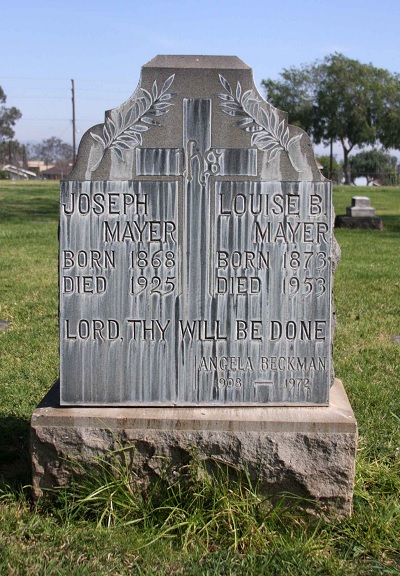 I
have a half first cousin 3x-removed whose name entered in the Find-A-Grave site is “Louise Bodetz Mayer.” The
Bodetz spelling is wrong; she was born Aloisia Potetz in Neumarkt an der Raab and baptized at the church in Sankt
Martin an der Raab. I
have a half first cousin 3x-removed whose name entered in the Find-A-Grave site is “Louise Bodetz Mayer.” The
Bodetz spelling is wrong; she was born Aloisia Potetz in Neumarkt an der Raab and baptized at the church in Sankt
Martin an der Raab.One of her children may have given the cemetery the incorrect Bodetz spelling of her maiden name, perhaps having heard the name but never having seen it written. I would not tamper with that, but I did want to give her descendants a trail that would lead them to their roots. The first step was to change Louise Mayer’s birth information on the Find-A-Grave site from “Hungary, Austria” to the village of her birth, Neumarkt an der Raab. Even better, a request to the Burgenländers Honored and Remembered database caretakers added the Mayer family to their list—with the Potetz surname correctly included. Some people might be surprised by the misspelling of the Potetz surname as Bodetz. I’m not surprised at all, because Bodetz is close to the way my dad pronounced Potetz. The 1858 head-of-household list for Welten has three examples of that same error, the Potetz surname spelled Bodetz. The German dialect used in that part of southern Burgenland seems to be the cause of the problem. In that location, the interchange of B and P seems to happen on both sides of the old Austria-Hungary border. The church records in Fehring, Austria, are indexed, with surnames starting with B or P indexed together. Baptisms are entered in the chronological church book, and the name of the child is also entered in the index. Each letter has its own index grouping, but B’s and P’s are indexed together (as well as C with K, D with T, and F with V).  Aloisia’s
grandfather, Josef Potetz (1794-1839), is the ancestor I share with her (I descend from his first wife, Maria Neuhertz,
while Aloisia descends from his second wife, Barbara Preininger). A photo of Aloisia Potetz Mayer, using the American
version of her name, Louise, is in her 1937 Naturalization Declaration. Aloisia’s
grandfather, Josef Potetz (1794-1839), is the ancestor I share with her (I descend from his first wife, Maria Neuhertz,
while Aloisia descends from his second wife, Barbara Preininger). A photo of Aloisia Potetz Mayer, using the American
version of her name, Louise, is in her 1937 Naturalization Declaration.The story of Aloisia Potetz Mayer’s immigration to America parallels the immigration story of many families from Burgenland, with people moving back and forth and parents separated from children. Aloisia had married Josef Mayer at the church in Sankt Martin an der Raab. They moved to his village, Poppendorf im Burgenland, where five of their six children were born. Like many Burgenland immigrants, Josef and Aloisia Mayers’ move to America came in stages. First Josef came in 1903 for work. He went again to America in 1909. Aloisia arrived a few months later with their baby and two oldest children. Three daughters stayed in Gritsch with Aloisia’s brother, Franz Potetz, and his wife, Barbara. That separation lasted for four years and three months! Their aunt, Barbara Potetz, must have seemed like a mother to those three girls. Their uncle, Franz Potetz, brought them—Aloisia Mayer, age 13, and 11-year-old twins, Gisella and Maria—to join their family in New York in 1914. Family separations like this are not unusual in Burgenland immigration stories. Starting in New York, the family shed daughters across America. The oldest daughter, Theresia Mayer (1895-1972), married John Koller to become Theresa Koller in America. Theresa and her husband started their family in New York but they soon moved to Milwaukee. The rest of the family moved to Allentown, where their daughter, Aloisia (1900-1976), married Herman Fiedler, to become Louise Fiedler in America. Louise Fiedler moved to her husband’s location, Port Huron, Michigan, which was yet another Burgenland immigrant enclave. The remaining family moved to Los Angeles, California. The oldest son, Julius (1898-1970), was the custodian for the Ingleside High School in Los Angeles for many years. His mother lived with him after her husband (his father) died in 1925. Julius never married and I can find no burial location for him. From the Social Security Death Index, I know where and when he died (Los Angeles on July 25, 1970), giving me enough information to request including him in BH&R. The 1927 California death record of Maria, born in 1902, did include her burial location, Calvary Cemetery, so that can be included in her entry in BH&R. The Mayer family’s given names experienced transitions like we see for our immigrant ancestors. Shown below, their names start with the spellings used in their Hungarian birth records, changing to their names in Ellis Island ship manifests, and then to the names they used in America.
A “Family Tree” becomes a “Relative Bush”
The importance of BH&R is shown by what is missing in other places. Find-A-Grave listed the birthplace of
Louise Mayer Fiedler (1900-1976) as “Hungary.” Her obituary gives her birthplace as “Hungary, Austria.” In neither
Find-A-Grave nor in her obituary is Poppendorf mentioned. Louise Fiedler left 34 grandchildren, probably with none of
them knowing she was born in the village of Poppendorf im Burgenland. Thanks to BH&R, if any of her descendants go
looking for their roots, there will be a record to guide them. |
||||||||||||||||||||||||||||||||||||||||||||||||||||||||||||||||||||||||||||||||||||||||||||||||
3) HISTORICAL BB NEWSLETTER ARTICLES Editor: This is part of our series designed to recycle interesting articles from the BB Newsletters of past years. I again go back twenty years, to when Gerry wrote about the "ethnic cleansing" in the US (and particularly in Allentown, PA) during WW-I. My ancestors were in Minnesota then, but the same "removal" of the German language occurred there too. Most notably, the "Luxemburger Gazette" newspaper, a weekly targeted at German-speakers of Luxembourgish descent, was forced out of business ...even though it was originally established to be free of pro-Prussian sentiment. Another German-language newspaper, "Der Nordstern," (The North Star) managed to survive until 1931, but only because it had added an English-language supplement. THE BURGENLAND BUNCH NEWS - No. 80 May 15, 2000 WORLD WAR I ETHNIC CLEANSING (portions of an article by Frank Whelan of the Morning Call, March 3, 2000) Editor's Note (Gerry): It always amazes me to see how stupidly some react to the actions of one ethnic group or another; tribalism at its worst. As if calling something by another name or denying language or history will somehow remedy crimes committed by one particular national or ethnic generation upon another. Today we see much of this in Europe, Africa, the mid-eastern nations and elsewhere, even here in the United States. I often think if we followed this philosophy to its ultimate conclusion there would be large gaps in our way of life, e.g., let's not drink coffee in retaliation for Turkish evil deeds in the 1600 and 1700's 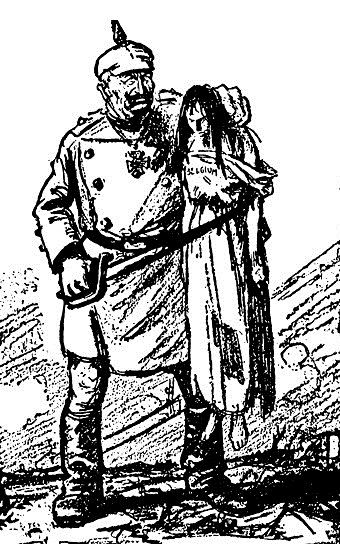 (the
Turks brought coffee to Vienna where it spread throughout Europe) and let's not make cookies or rolls in the shape of a
crescent (the sign of Islam). No more "kipfels"! The following is a prime example of such a case. (the
Turks brought coffee to Vienna where it spread throughout Europe) and let's not make cookies or rolls in the shape of a
crescent (the sign of Islam). No more "kipfels"! The following is a prime example of such a case.As early as the 1700's, German-speaking immigrants began settling in the Lehigh Valley and in the 1800's more followed. In the late 1800's and early 1900's, Austro/Hungarians (including Burgenländers) arrived. The German language was secondary but of great ethnic interest to the numerous descendants. Then came WW-I and the "atrocities" of Kaiser Bill. Time to forbid all things German! No more sauerkraut, wiesswurst, frankfurters or Dachshunds! No more German language! CALL TO BAN TEACHING GERMAN LANGUAGE SPLIT ALLENTOWN BOARD DURING WW-I (From the Allentown, PA, "Morning Call") On the evening of May 27, 1918, a thunderstorm pounded the Lehigh Valley with rain, wind and hail. Inside the Allentown School Board's meeting room, the mood was almost as stormy. The members had the most controversial subject on their agenda that they had ever faced, it combined a volatile mix of patriotism and the teaching of a foreign language. School Board Chairman J. Dallas Erdman was demanding that the members forbid the teaching of German in the public schools. If not, they would be siding with the nation's foes who were killing Americans at that moment in World War I. The Catasauqua School Board, Erdman pointed out, had already banned German. It was up to Allentown to follow. Board members William F.P. Good, Oliver A. Iobst and Charles A. Reber were in Erdman's corner. But members Wilson Arbogast, Harry G. Correll, William J. Dietrich, the Rev. Charles J. Rausch and Oliver T. Weaber could only be pushed so far. Make German an elective rather than the required high school course it had been since 1858, they argued. But don't do away with the teaching of the language of Luther, Goethe and the German ancestors of everyone in the room. The board's argument grew heated. When their loyalty was questioned, the dissidents protested. "I am an American," said Rausch after a cutting remark in German by Iobst. "Do you challenge my patriotism?" said Weaber, rising, "menacingly from his chair," the Call reported. The argument raged on, but the German supporters would not budge. Finally, the board agreed to the compromise of making German an elective. Part of the agreement was replacing the course's textbook, "Im Vaterland," which means "My Fatherland," with something that sounded less pro-Germany. The roots of this argument went back to the earliest days of the city and region's education system. Until the Civil War, German was the first language of the Lehigh Valley. Newspapers were written in it, God's word was preached in it and school children were taught in it. It was not unusual to find rural schools in the Lehigh Valley where Pennsylvania German was the only language spoken into the 20th century. This was not confined to public schools. Into the 1900s, Muhlenberg College's faculty and administration were deeply divided between those who felt all its courses should be taught in German and those who believed that only its theology courses -- the school was founded to train students for the Lutheran ministry -- should be taught in German. But after the Civil War, the region was becoming more and more bilingual. English was the language of business and the popular culture that surrounded the Lehigh Valley. It was clearly being heard more often, mixed with the Pennsylvania German dialect, in the region's cities and towns. Perhaps for that reason the city's educational leadership, particularly clergymen, wanted German as a required part of the public school curriculum. As the German Empire rose to a position of world power, many people in the Lehigh Valley were proud of it and their German roots. Teaching German in the schools was a part of the community's ethnic heritage that few questioned.  But World War I and the anti-German hysteria that followed America's entry in April 1917 changed all that. Sauerkraut became liberty cabbage and anybody who spoke the "Hun's" language was as good as a traitor. The Allentown School Board's decision was made the same spring that the most popular movie in the city was a propaganda film, "The Kaiser -- The Beast of Berlin." Ads for the film in the Call showed a sinister Wilhelm II with blood dripping from his hands. The day after the board's decision, the Allentown chapter of the Past Presidents Association of the Patriotic Order, Sons of America, denounced the members and demanded German be dropped. Eventually, the board's compromise decision was overruled by a higher authority. In April 1919, six months after the war ended, Pennsylvania's Legislature banned the teaching of German in the state's public and normal schools. Although the law eventually lapsed and German came out of hiding, the debate of 1918 is a reminder of how volatile a mix language and politics can be. (end of extract) Editor's Note (Gerry): In 1946, 1947 & 1948, I took German as an elective in Allentown High School. I wish Hungarian and Serbo-Croatian had also been available. |
||||||||||||||||||||||||||||||||||||||||||||||||||||||||||||||||||||||||||||||||||||||||||||||||
4) ETHNIC EVENTS (none! ...blame the virus!) LEHIGH VALLEY, PA (none) NEW BRITAIN, CT (none) ST. LOUIS, MO (none) UPPER MIDWEST (none) |
||||||||||||||||||||||||||||||||||||||||||||||||||||||||||||||||||||||||||||||||||||||||||||||||
5) BURGENLAND EMIGRANT OBITUARIES Anna Skrapits (née Skrapits)  Anna Skrapits, 86, of Northampton, Pennsylvania, passed away peacefully on Friday, May 1. She was surrounded by her family when she left this life at St. Luke’s Hospital in Bethlehem. She was the devoted wife of John Skrapits since May 27, 1956, for almost 64 years, until his death on March 26, 2020. Born in Szentpéterfa (Petrovo Selo/Prostrum), Hungary on July 21, 1933, she was one of six children of the late István and Johanna (Kurcz) Skrapits. After her marriage to John in May 1956, they decided to leave their homeland in November of the same year because of the failure of the Hungarian Revolution. Anna was five months pregnant when she and her husband crossed into Austria as refugees and stopped at various refugee camps. Eventually, they made the journey from Munich, Germany, to Camp Kilmer in Piscataway, New Jersey, through Operation Safe Haven in February 1957. They settled in Northampton to be near other family members, and Anna gave birth to their firstborn, John, one week after arriving in the United States. Anna found great solace in her Catholic faith, praying the Rosary every day. She derived great enjoyment from the simple things in life, such as tending to her vegetable garden and flowers, cooking, and baking for her family. Anna was happiest when she was caring for her loved ones, and she especially enjoyed visits from her grandchildren. She was a member of Queenship of Mary Catholic Church and the Ss. Peter and Paul Society, both in Northampton. Survivors: Children, John, Andrew and wife Kathleen (Kachmar), and Juliann; her grandchildren, Kristen, Brian, Bethany, and Chloe. She is also survived by her brother Stephen and his wife Heidi. Anna was predeceased by her husband John five weeks earlier, along with her parents and her siblings George, John, Cecilia, and Maria. Services: A private burial service will be held this week, and a Memorial Mass will be announced at a later date. Arrangements are under the direction of the Reichel Funeral Home – Northampton. Online condolences may be offered above. In lieu of flowers, any donations can be made to Queenship of Mary Catholic Church. Published in Morning Call on May 3, 2020 Elizabeth Piedl (née Tarcsay)  Elizabeth Piedl, 90, of Springfield,
New Jersey, passed away on May 2, 2020, at Center for Hope in Elizabeth. Elizabeth Piedl, 90, of Springfield,
New Jersey, passed away on May 2, 2020, at Center for Hope in Elizabeth.Born in Rábafüzes (Raabfidisch), Hungary, she was one of ten children of the late Ferenc and Ilona (Kerschbaum) Tarcsay. They endured Nazi and then Russian occupations during WW-II, then with family, she fled to Austria during the 1956 uprising. A year later she arrived at Camp Kilmer in Piscataway, and lived in Newark and briefly in Cleveland, Ohio, before returning to New Jersey to raise her family. A devout Catholic, she was a long-time member of St. James the Apostle parish, active in the Rosary Society and as a Girl Scouts assistant leader for many years. She was a Springfield crossing guard for over 30 years. Her happiest times were with her family and in her garden. Her gifts to her children include a love of reading, gardening, cooking, family, her faith, and her homeland. Predeceased by her husband, Karoly, she leaves behind her children, Martin, Katherine, Andrew and his wife, Christina George, and Angela and her husband, Martin Murphy; grandchildren, Matthew and his wife, Amanda, Karla, Alexander, Karoly, and Zoltan; and great-grandson, Charlie. She also leaves four siblings, and many nieces and nephews and extended family in New Jersey, Ohio, Austria, Hungary and Germany. Burial is Monday, May 11, at Graceland in Kenilworth. A memorial Mass and Celebration of Life will be held later. In lieu of flowers, donations to St. James Church or Center for Hope in Elizabeth's memory would be appreciated. Published in The Star-Ledger on May 10, 2020 Helen Strobl (née Wagner)  Helen M. Strobl age 86, of Whitehall,
Pennsylvania, passed away at her home on Tuesday morning, May 12, 2020. Helen M. Strobl age 86, of Whitehall,
Pennsylvania, passed away at her home on Tuesday morning, May 12, 2020.She was the loving wife of William Strobl for 67 years. The daughter of the late Rudolf and Maria Wagner, Helen was born in Heiligenkreuz, Austria and moved to New York City after the war at age 16. She and William moved to New Hyde Park on Long Island in the 1960's, where they raised their two children in their beautiful loving home. Helen took great pride in taking care of her home, being a great cook and socializing at the many Austrian dances. She also worked as a supervisor for Purolator Courier and was an avid New York Mets fan. In 1986, Helen and William moved to Whitehall, where they lived happily for 34 years. Helen will be remembered by her husband, William; daughter Linda Jendreski; son Ron Strobl and his wife Kerry; granddaughter Chelsea Hooker and her husband Tommy; sister Marie Schmidt. She was predeceased by her son-in-law Mark Jendreski. She leaves behind many friends and relatives in Pennsylvania, New York, Florida and Austria. A private Mass was held at St. Elizabeth of Hungary Church in Whitehall with burial service at Resurrection Cemetery. Published in Morning Call on May 17, 2020 Margit Selhorst (née Bauer)  Margit "Peg" Selhorst, age 91, of
Coldwater, Ohio, died on Thursday, May 14, 2020 at Community Hospital in Coldwater. Margit "Peg" Selhorst, age 91, of
Coldwater, Ohio, died on Thursday, May 14, 2020 at Community Hospital in Coldwater.She was born January 14, 1929 in Rábafüzes (Raabfidisch), Hungary to the late Karl & Theresia (Györy) Bauer and immigrated to the Port of New York on March 5, 1937. On June 27, 1953 she married Henry J. Selhorst, who died July 5, 2017. She is survived six children, Mike & Rosanne Selhorst of Coldwater, Yvonne & Ken Nickerson of Naples, FL, John Selhorst of Hilliard, Cathy & Jeff Payne of Cincinnati, Larry & Pat Selhorst of St. Henry and Marilyn & Bill Stall of Coldwater; nine grandchildren; six great grandchildren; brothers, Carl Bauer and Frank & Carol Bauer all of Dayton. She is preceded in death by a daughter-in-law Patty Selhorst; a son-in-law Robert Brown; a sister, Theresa Lummer; and in laws, Carol Bauer, Clara & Homer Schieltz, Ludwig & Bertha Selhorst, Bernard & Carol Selhorst, Odelia Bruggeman, Jillian & Ray Wilker, and Frances & Wilfred Klenke. She was a member of Holy Trinity Catholic Church, Coldwater; the St. Ann’s Rosary Altar Sodality of the church; Coldwater American Legion Post #470 Auxiliary; and she worked at the former Mersman and Huffy Plants in Celina. Due to COVID-19, a private family Mass will be held at 11:00 am on Tuesday, May 19, 2020 at Holy Trinity Church, Coldwater with live stream at http://www.coldwatercluster.org/node/29. Burial will follow in St. Elizabeth Cemetery, Coldwater. In Lieu of flowers memorials may be made to American Heart Association. Condolences may be left at hogenkampfh.com. Rudolf Tobitsch  Rudolf Tobitsch, 82, of Charleston,
South Carolina, husband of Margaret (Hödl) Tobitsch, entered into eternal rest on Wednesday, December 18, 2019. Rudolf Tobitsch, 82, of Charleston,
South Carolina, husband of Margaret (Hödl) Tobitsch, entered into eternal rest on Wednesday, December 18, 2019.Born on June 17, 1937 in Deutsch Kaltenbrunn, Austria, Rudolf was a son of the late Rudolf and Anna (Himler) Tobitsch. He was the owner of a construction company, was a master brick mason and a member of Saint Clare of Assisi Catholic Church on Daniel Island. He loved his wife of 58 years, Margaret Tobitsch; and all of his children, grandchildren and extended family, son, Klaus Tobitsch (Lydia) and their children Stefan and Erich; daughter, Lisa Fletcher (Rick) and their children, Cassidy Butts, Brandon Butts, Lauren Claussen and Richard Fletcher; and daughter, Eva Ullo (Vincent) and their children, Nicolas Ullo and Isabella Ullo; brother, Franz Tobitsch (Maria); sister, Edith Ornig. He was preceded in death by his brother Joseph Tobitsch. The Mass of Christian Burial will be celebrated on Saturday, December 21, 2019 in St. Benedict Catholic Church, 950 Darrell Creek Trail at 10:00 am. Interment will follow in Northlake Memorial Gardens, Huntersville, NC at 3:30 pm. Arrangements by J. Henry Stuhr, Inc. Mount Pleasant Chapel. |
||||||||||||||||||||||||||||||||||||||||||||||||||||||||||||||||||||||||||||||||||||||||||||||||
| END OF NEWSLETTER (Even good things must end!) |
||||||||||||||||||||||||||||||||||||||||||||||||||||||||||||||||||||||||||||||||||||||||||||||||
|
Burgenland Bunch Newsletter, copyright © 2020 by The Burgenland Bunch |
 News
News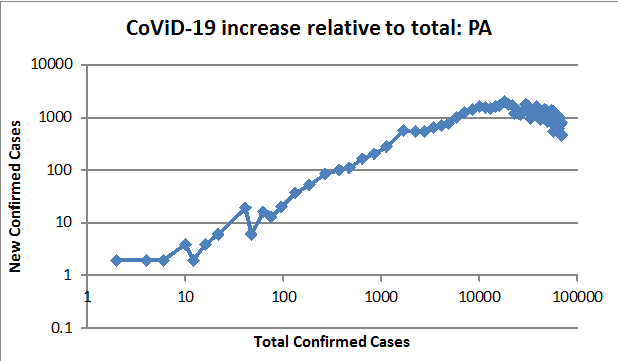
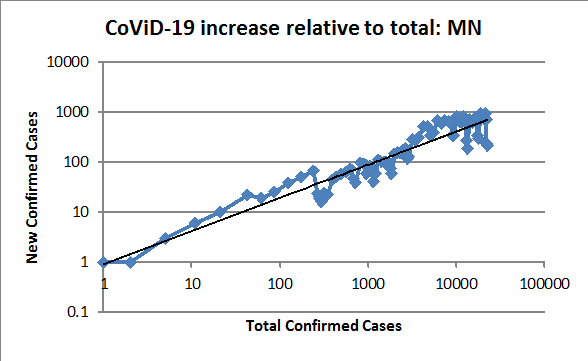
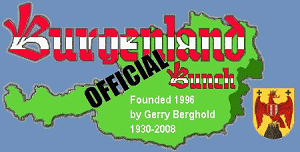 The
Facebook Bunch (from Vanessa Sandhu):
The
Facebook Bunch (from Vanessa Sandhu): Update
for book "The Burgenländer Emigration to America": Here is this month's update on purchases of the English issue of
the 3rd edition of Dr. Walter Dujmovits' book "Die Amerika-Wanderung Der Burgenländer."
Update
for book "The Burgenländer Emigration to America": Here is this month's update on purchases of the English issue of
the 3rd edition of Dr. Walter Dujmovits' book "Die Amerika-Wanderung Der Burgenländer."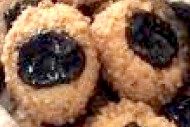 Husarenkrapfen
(Hussar Donut)
Husarenkrapfen
(Hussar Donut)
